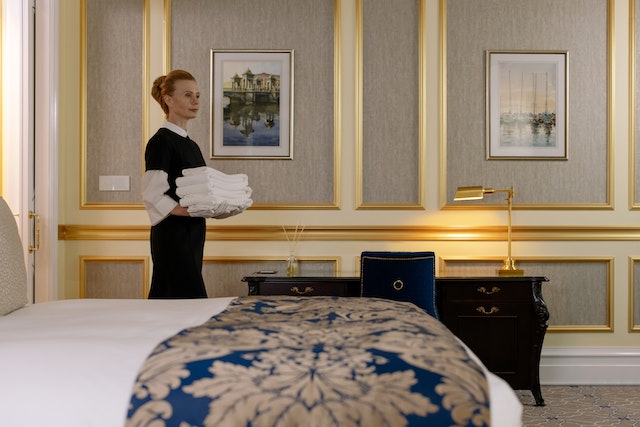Introduction
Hospitality lighting plays a crucial role in creating the perfect ambiance and enhancing the overall guest experience in hotels, restaurants, bars, and other similar establishments. From setting the mood to highlighting architectural features, the right lighting design can make a significant difference. In this blog, we’ll explore the world of hospitality lighting, discussing various aspects and techniques that can transform any space into a welcoming and unforgettable environment.
- Understanding the Role of Hospitality LightingHospitality lighting serves a dual purpose. It must be functional, providing sufficient illumination for guests to comfortably navigate the space, read menus, and enjoy their surroundings. Simultaneously, it must be aesthetically pleasing, setting the right mood and ambiance to match the establishment’s character and purpose.
- Types of Hospitality LightingThere are various types of lighting used in the hospitality industry. These include:a. Ambient Lighting: This serves as the base layer of illumination, providing overall light to a space. It sets the tone and can be achieved through ceiling-mounted fixtures, wall sconces, or even concealed LED strips.b. Task Lighting: Task lighting is focused on specific areas where guests perform tasks such as reading, dining, or working. Examples include table lamps, pendant lights over dining tables, and bedside lamps.c. Accent Lighting: Accent lighting is used to draw attention to particular architectural elements or décor. It can include spotlights, wall washers, or display lighting for artwork or merchandise.d. Decorative Lighting: These are fixtures designed not only for illumination but also as decorative pieces. Chandeliers, pendants, and unique lamp designs fall into this category.
- Color Temperature and Color RenderingColor temperature and color rendering are essential considerations in hospitality lighting. Color temperature determines the warmth or coolness of the light, affecting the ambiance. Meanwhile, color rendering measures how accurately the light reveals the true colors of objects and surfaces. Both these factors can be adjusted to match the establishment’s desired atmosphere.
- Smart Lighting SystemsMany hospitality establishments are turning to smart lighting systems that offer control and energy efficiency. These systems allow for the adjustment of lighting levels, color, and even scheduling through smartphones or centralized control systems. This flexibility not only enhances the guest experience but also helps in reducing energy costs.
- Lighting Design ConsiderationsWhen designing the lighting for a hospitality space, several factors must be considered:a. Layout and Space Planning: The lighting plan should complement the layout of the space and ensure even illumination throughout.b. Interior Design and Theme: Lighting should align with the interior design and theme of the establishment, whether it’s modern, classic, or themed.c. Energy Efficiency: Sustainable lighting solutions are becoming more popular, not only for environmental reasons but also to save on operational costs.d. Guest Comfort: Guest comfort and preferences should be taken into account. Some guests prefer brighter, more vibrant lighting, while others may favor a cozier, dimly lit environment.
- Lighting Maintenance and UpkeepProper maintenance is essential to ensure that the lighting remains effective and safe. Regular checks and replacements of bulbs or fixtures should be part of the establishment’s routine maintenance.
- Case StudiesExplore some real-world examples of exceptional hospitality lighting designs and the impact they’ve had on their respective establishments.
- The Future of Hospitality LightingAs technology continues to advance, the future of hospitality lighting holds exciting possibilities. Learn about emerging trends such as circadian lighting, immersive experiences, and even more energy-efficient solutions.


Leave a Reply